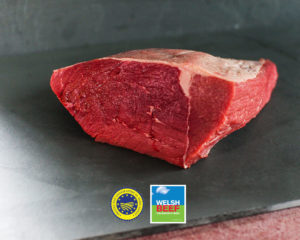 At Hugh Phillips Gower Butcher, we pride ourselves on the quality of our meat and one of the reasons is because we always strive to find the best sources to meet the high standards our customers expect. This is why all our beef products come from grass fed cattle.
At Hugh Phillips Gower Butcher, we pride ourselves on the quality of our meat and one of the reasons is because we always strive to find the best sources to meet the high standards our customers expect. This is why all our beef products come from grass fed cattle.
As well as knowing the exact provenance of the cattle, there are many other benefits when it comes to grass fed beef. Firstly, it is one of the most nutrient-dense proteins you can buy, containing extensive micronutrients along with a good amount of brain-boosting omega-3 fatty acids.
What’s the Difference Between Grass-Fed and Grain-Fed Beef?
Cattle is meant to graze on grass, preferably within open pastures. As the demand for meat has grown over the past century, farmers started feeding their herds grain-based products.
But although beef is not strictly seasonal, most farmers beliee that their best beef cattle of the year is produced in the Summer months when finishing on grass and natural vegetation is easy. It is much harder to ‘finish feed’ cattle indoors in winter months on hay or corn products alone, which is why very few traditional farmers would finish grass-fed cattle out of summer months.
The Benefits of Grass-Fed Beef
Though grass fed beef tends to be a little more expensive than other beef products, there are a number of benefits that justify this extra cost.
- Fewer Calories: beef from grass-fed cattle is lower in total fat content because their diet is more natural and clean.
- Helps Support Healthy Blood Sugar Levels: beef from grass-fed cattle contains a certain beneficial fatty acid called CLA (conjugated linoleic acid). CLA can help prevent several diseases and conditions like obesity and diabetes.
- Contains Electrolytes: people who diet regularly find that the essential electrolytes in their body (sodium, potassium, and magnesium) aren’t replenished once they’re flushed out. One grass-fed strip of steak contains 732 milligrams of potassium, 49 milligrams of magnesium, and 118 milligrams of sodium.
- Helps to Fight Cancer: Grass-fed beef contains roughly twice the amount of conjugated linoleic acid (CLA) compared to beef from grain-fed cows. Most naturally occurring nutrients containing anticarcinogenic properties are derived from plant foods, but CLA is unique because it’s one of the only anticancer nutrients derived from meat. CLA is considered to be one of the strongest nutrients which can defend against cancer. A study conducted on women who were given high amounts of CLA-rich foods had roughly a 60% lower risk in breast cancer over those who had little to no amounts of CLA in their diet.
- Contains More Healthy Fats: Grass-fed beef provides up to six times more omega–3 fatty acids than grain-fed beef. There are many benefits from increased omega–3 consumption including decreasing inflammation in those suffering from arthritis.
- Reduces the risk of heart disease: Clinical evidence concludes a decreased risk of heart disease with an increased consumption of CLA, a nutrient abundant in grass-fed beef
Cooking Grass-Fed Beef
It’s worth noting that grass-fed products tend to cook faster than grain-fed products. To prevent burning your cut of meat, follow these cooking suggestions:
- Use a meat thermometer to prevent overcooking.
- Always use tongs rather than a fork when tossing the beef over.
- Make sure to preheat the grill, pan, or oven before cooking.
- Don’t use a microwave to thaw out grass-fed beef. Thaw it in the refrigerator and let it sit at room temperature for 30 minutes.
Where to Buy Grass-Fed Beef
Today, you can buy grass-fed beef in most proper butchers shops, including the Hugh Phillips Gower Butchers stall in Swansea Market (or you can order these products from our online shop: www.bestonlinebutcher.co.uk).

